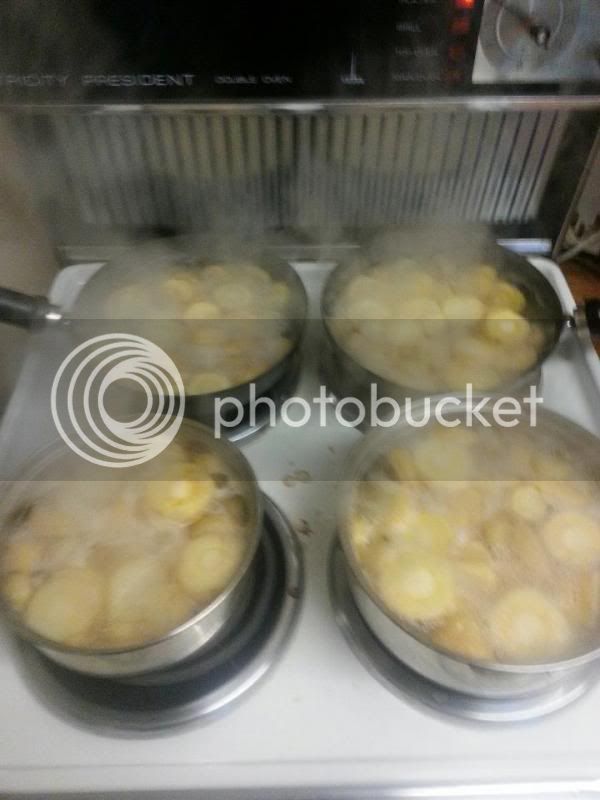Went from this recipe in 'Booze for Free' which is also on the telegraph site...
Now started this on March 10th and strained it over about 14 days, it tasted good already, just a bit concerned as to leaving cotton wool in the top, I'm hoping it's just a bit of yeast on top, but can't tell if it's got a very small touch of mould floating :? (still smells parsnippy and good)
Quite a bit of sediment in the bottom at present so maybe some of that got lose, was tempted at syphoning to another demi again, with maybe a little top up of boiled water, but through a muslin bag to be on the safe side?
Just wish I could locate my original sg (although think it was around 1.12-4 as thought if it went to 1.0 it would be around 17%)
Any advice appreciated, as definitely aim at keeping it till Christmas, with a couple 'shared'
Ingredients
1.8kg/4lb parsnips, 1.3kg/3lb sugar, 4 litres/ 7 pints of water
1kg/2lb raisins, 1 lemon, 1 tsp pectolase, tsp yeast nutrient
1 Campden tablet (optional), white wine yeast
Wash the raisins in very hot water, allow to cool, then chop up. Put in a saucepan, cover with 1 litre/2 pints of water and simmer for five minutes. Push through a muslin cloth, keep the juice to one side, and compost the raisins.
Give the parsnips a good wash and a bit of a scrub to get the dirt off, but donât peel them. Place in a large pan and boil in the rest of the water. Cook until you can put a fork in them, but not so they fall apart.
Meanwhile, put the sugar, the raisin juice, the juice and the rind of the lemon into a smaller pan and simmer for 45 minutes, stirring occasionally.
Strain the parsnip liquid through a muslin cloth into a fermentation bin (the parsnips can then be made into parsnip mash, composted, or fed to your pigs). Also, add the raisin juice and, when hand-hot, the yeast nutrient, the pectolase and Campden tablet. If using a Campden tablet, leave for 24 hours before going onto the next step.
Add the yeast, leave for 10 days, then strain into a demijohn.
Plug up the demijohn with cotton wool, leave for six months, rack if necessary. Siphon into sherry bottles and plug with sherry cork stoppers.
The sherry will improve with at least six monthsâ ageing.
Now started this on March 10th and strained it over about 14 days, it tasted good already, just a bit concerned as to leaving cotton wool in the top, I'm hoping it's just a bit of yeast on top, but can't tell if it's got a very small touch of mould floating :? (still smells parsnippy and good)
Quite a bit of sediment in the bottom at present so maybe some of that got lose, was tempted at syphoning to another demi again, with maybe a little top up of boiled water, but through a muslin bag to be on the safe side?
Just wish I could locate my original sg (although think it was around 1.12-4 as thought if it went to 1.0 it would be around 17%)
Any advice appreciated, as definitely aim at keeping it till Christmas, with a couple 'shared'






